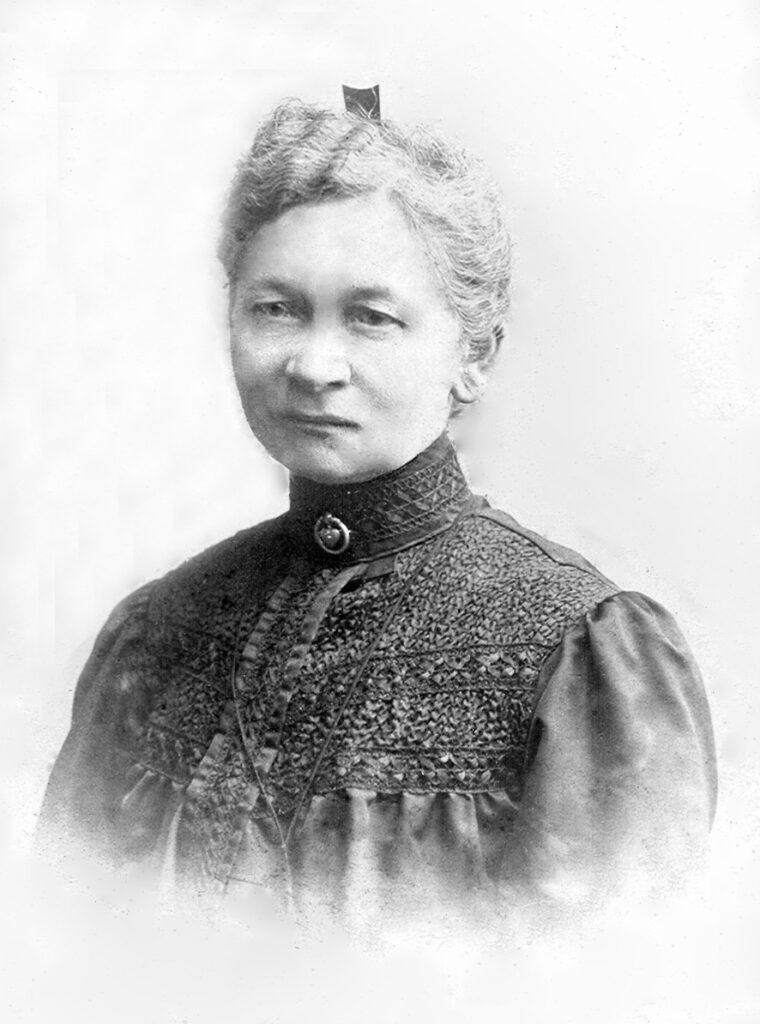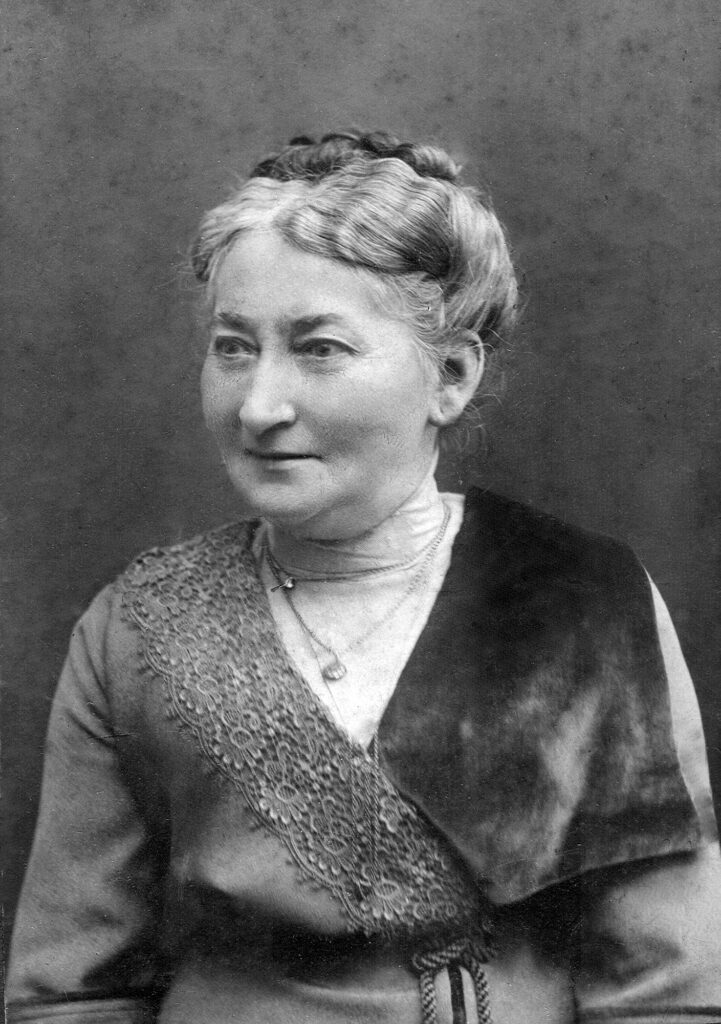1842 – Oscar David Friedrich Wilhelm Kelsch
Oscar David Friedrich Wilhelm Kelsch was born on December 29, 1842 to Wilhelm Christoph Kelsch and Johanne Dorothee Schrader in the town of Halberstadt in Landkreis Halberstadt (the rural county of Halberstadt) in Provinz Sachsen (the Province of Saxony) in Königreich Preußen (the Kingdom of Prussia). (See Wilhelm Kelsch and Johanne Schrader.) He was baptized on January 29, 1843 at Hofkirche zu Unser Lieben Frauen zu Halberstadt (Court Church to Our Lady of Halberstadt) an Evangelisch-Reformierte Kirche (Evangelical Reformed Church).
Halberstadt, Königreich Sachsen
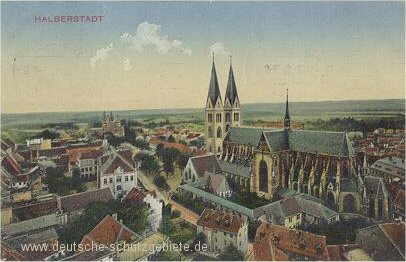
Today, the city of Halberstadt is located in the German state of Saxony-Anhalt and is the capital of the Landkreis (district) of Halberstadt.
In 804, the Bishopric of Halberstadt was created by Charlemagne in an ongoing effort to Christianize the Saxon tribes. The bishop of Halberstadt was a prince of the Holy Roman Empire. The Prince Bishopric existed until the end of the Thirty Years’ War in 1648, when the territory was secularized and became part of Königreich Brandenburg-Preußen (the Kingdom of Brandenburg-Prussia).
The secular Princes of Halberstadt were the Prince/Electors of Brandenburg, who became the kings of Prussia and later the emperors of Germany.
In the 17th century, Halberstadt had one of the largest Jewish communities in central Europe. At the time, nearly one in twelve of the town’s inhabitants, almost 700 people, were Jewish.
During the Napoleonic wars, Halberstadt became part of the French-occupied Kingdom of Westfalen (in French, La Royaume de Westphalie), where it was the capital of the Departement of the Saale. In 1815, Halberstadt came under Prussian control, and in 1816 it became part of the Regierungsbezirk Magdeburg (Government District of Magdeburg) within the newly established Provinz Sachsen (Province of Saxony) in Königreich Preußen. At the same time the Landkreis (district) of Halberstadt was created.
Königreich Sachsen (the Kingdom of Saxony)
The Saxons were originally a small tribe living on the North Sea between the Elbe and Eider Rivers in today’s Holstein. Their name was derived from their stone knives called Sax.
In the third and fourth centuries, the Saxons pushed their way west into the region that is today Lower Saxony and northern North Rhine-Westphalia. They were followed by other tribes (Bavarians, Thuringians, Franks, and Frisians) which joined them in a large confederation. With the exceptions of the Saxons, all these confederations were ruled by kings. The Saxons were divided into a number of independent bodies under different chiefs, but in time of war they elected a duke to lead them. This confederation of tribes became collectively known as the Saxons. For centuries, the area was known as Saxony, and eventually as the Duchy of Saxony.
Beginning in 772 CE, Karl der Große (Charles the Great, or Charlemagne) conquered and eventually defeated the Saxons to expand the Frankish kingdom. In all, eighteen battles were fought in northwestern Germany during the thirty years of the Saxon Wars.
Charlemagne’s intent was the incorporation of Saxony into the Frankish realm and their conversion from paganism to Christianity. Frankish Catholic missionaries, along with others from Ireland and Anglo-Saxon England, attempted to convert the Saxons to Christianity with armed force. The Saxons resisted. Charles’ main Saxon opponent, Widukind, accepted baptism in 785 CE as part of a peace agreement, but other Saxon leaders continued to fight. Upon his victory in 787 CE at Verdun, Charles ordered the wholesale killing of thousands of pagan Saxon prisoners.
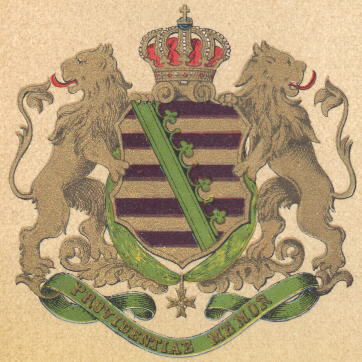
On Christmas Day, 800 CE, The Holy Roman Empire was founded with the coronation of Charlemagne by Pope Leo III. After several more uprisings, the Saxons suffered definitive defeat in 804 CE. Herzogtum Sachsen (the Duchy of Saxony) now became part of Heiliges Römisches Reich (the Holy Roman Empire) as an independent electorate—Kurfürstentum Sachsen (the Electorate of Saxony).
The empire was mainly a conglomeration of Germanic lands in Central Europe that lasted for 1,000 years, from 800 to 1806. From the late 15th century onwards, it was also known as Heiliges Römisches Reich Deutscher Nation (the Holy Roman Empire of the German Nation).
Following the abolition of the Holy Roman Empire in 1806 by Napoleon, Kurfürstentum Sachsen (the Electorate of Saxony) became Königreich Sachsen (the Kingdom of Saxony) by decree of the French Emperor. In 1871, after the end of the Franco-Prussian War, it became part of the newly-formed Deutsches Reich (the German Empire).
1848 – Anna Wilcke
Anna Charlotte Caroline Wilcke was born on September 8, 1848 to Franz Wilcke and Brigitta Pietzker in Gollnow, in Provinz Pommern (the Province of Pomerania) in Königreich Preußen (the Kingdom of Prussia).
I recently discovered that Anna Magdalena Bach (1701-1760), the second wife of Johann Sebastian Bach, was born Anna Magdalena Wilcke, but no family connections can be traced. She came from Zeitz and died in Leipzig, both towns in Saxony.
Gollnow
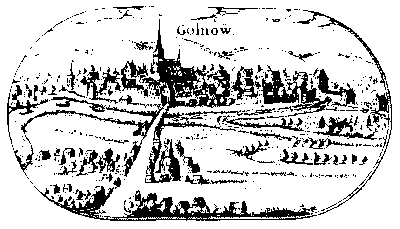
The town of Gollnow (now the Polish town of Golaniów) is situated on the bank of the Ihna river in the center of a forest on the northwestern Polish plain. The village was founded in 1190 and raised to the rank of a town in 1268. From 1648 to 1720 it was under the influence of Sweden. In 1720 it became part of the Kingdom of Prussia.
The town had two Evangelical churches and a synagogue.
Today, Golaniów is the capital of Goleniów County in the West Pomeranian Voivodeship in northwest Poland.
Provinz Pommern
The region of Pommern or Pomerania is located in northwest Poland today. Germans first settled in this area in the 12th century. In the 13th century, the region was briefly under Swedish control. Then, in the 14th century, it came under the control of Brandenburg and in the 15th century joined the Prussian federation. From 1630 to 1815 it was again under the control of Sweden.
Finally, in 1815, Pomerania became a province—Provinz Pommern—of Königreich Preußen (the Kingdom of Prussia) and remained under German control until the end of World War II when it again became a part of Poland.
1860 – 1870: college and ordination
Family lore says that Oscar Kelsch attended Heidelberg University, but the university can find no record of his attendance there.
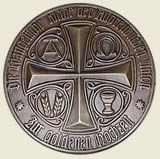
He was ordained as a minister of the Evangelische Kirche (Evangelical Church). My assumption is that he was ordained in the Evangelical Church of the Prussian Union which grew out of a union between Lutheran and Reformed (Calvinistic) churches.
In 1817, the Prussian king, Friedrich Wilhelm III, wanted a unified Protestant church and he issued a “Call to Union” to the two Protestant churches founded by Luther and Calvin. Part of his motivation was his grief that he had been unable to receive communion with his late wife because she was Lutheran and he was Reformed. In 1817, the Lutheran and Reformed traditions were united into one state church—the Evangelical Church of the Prussian Union.
The name Evangelical, which simply means “of the gospel,” was a compromise. In the nineteenth century, the term Evangelical indicated a blending of Lutheran and Reformed traditions.
1880 – 1890: marriage and children
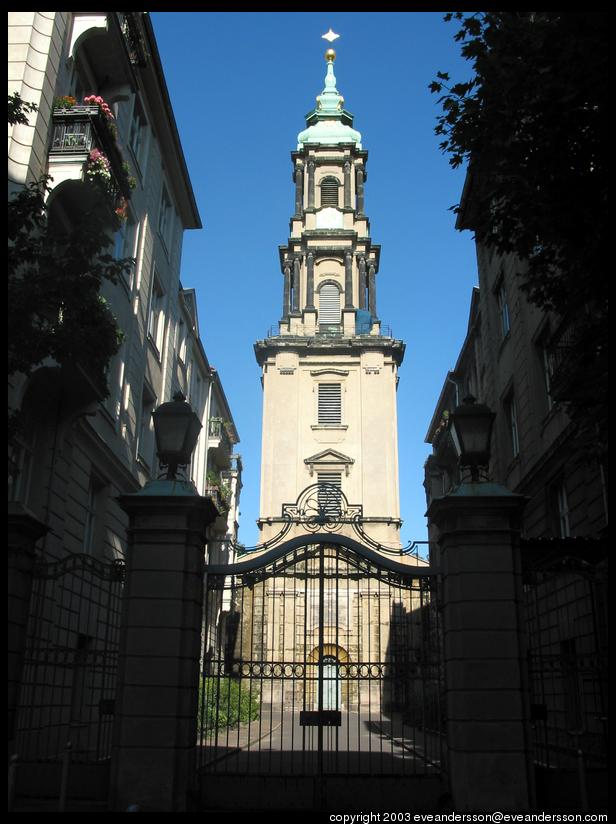
Oscar David Friedrich Kelsch married Anna Charlotte Caroline Wilcke on March 29, 1880 at the Evangelische Kirche Sophien (the Evangelical Church of Sophia), in Berlin, Königreich Preußen (the Kingdom of Prussia), in the Deutsches Reich (German Empire).
The church, more commonly known as the Sophienkirche, is located in Mitte, the historic central district of the city. It was endowed by Queen Sophia in 1712 and has what is considered Berlin’s most beautiful church tower, added in 1734. The church was named both after its benefactor and a second century saint, Saint Sophia (Sankt Sophien). The name of the church may have been an inspiration for the name of their youngest child born nine years later.
At the time of their marriage, Oscar was 38, and Anna was 32.
They had five children during the years they lived in Germany.
- Gerhard Wilcke Kelsch was born on November 19, 1882 in Stettin, Povinz Pommern, Königreich Preußen, Deutsches Reich
- Alma Kelsch was born in September 1888, location unknown in the Deutsches Reich
- Sophia Louisa Wanda Kelsch was born on November 1, 1889 in Marienburg, Kreis Marienburg, Provinz Westpreußen, Deutsches Reich
- A twin, possibly named Clara Kelsch, also born on November 1, 1889 in Marienburg. She died from Scarlatina or Scarlet fever, probably within her first year of life.
- One other child also died in infancy (perhaps their first), but no records exist.
Based on the birth places of their children, it appears that much of Oscar Kelsch’s German ministry took place in the northern coastal region of modern day Poland. From Berlin in the far eastern area of Germany, they went northeast to Stettin (Szczecin), a Baltic seaport, then much further northeast to Marienburg (Malbork). Anna Wilcke was also born in this Baltic coastal region; her home of Gollnow (Golaniów) was just northeast of Stettin. Oscar’s last known residence in Germany was Zoppot (Sopot), a coastal spa town.
Stettin, Provinz Pommern
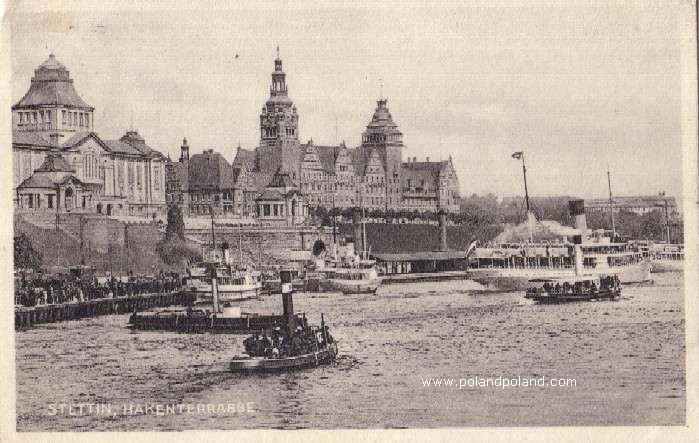
Their first child, Gerhard Wilke Kelsch, was born in the city of Stettin in 1882, which may have been the location of one of Oscar Kelsch’s earliest parishes. Stettin was the capital of Provinz Pommern (the Prussian Province of Pomerania. Today it is called Szczecin and is the capital of the West Pomeranian Voivodeship in northwest Poland.
Located on the Baltic Sea, Stettin was a major German seaport (after Hamburg and Bremen).
Marienburg, Provinz Westpreußen
In 1889, Oscar’s and Anna’ thirdt child, Sophia Louisa Wanda Kelsch, and her twin sister, were born in the town of Marienburg, Provinz Westpreußen (the Province of West Prussia) a part of the Deutsches Reich (the German Empire). We have to assume that Oscar Kelsch had a parish here also, perhaps his last in Germany before he emigrated to the United States. The town of Marienburg (today, Malbork, Poland) was built around the fortress Ordensburg Marienburg which was founded in 1274 on the east bank of the river Nogat by the Teutonic Knights. Both the castle and the town of Marienburg were named for their patron saint, the Virgin Mary.

This fortified castle became the seat of the Teutonic Order and was Europe’s largest Gothic fortress.
In the Thirteen Years’ War (1454-1466), towns in Pomerelia (an area in eastern Pomerania) and in western Prussia rebelled against the Teutonic Knights and sought the assistance of King Casimir IV of Poland. During war, the castle of Marienburg was pawned by the Teutonic Order to their imperial soldiers from Bohemia. They in turn sold the castle in 1457 to the Polish king in lieu of their pay.
Provinz Westpreußen
The Prussian province of Westpreußen (West Prussia) was located in the northeast corner of modern-day Poland.
In the Peace of Toruń that ended the Thirteen Year’s War (1454-1466), western Prussia became part of the Polish province of Prusy Królewskie (Royal Prussia). Eastern Prussia, on the other hand, remained with the Teutonic Knights, who were reduced to vassals of Poland. Their territory became Herzogtum Preußen (the Duchy of Prussia) in 1525 and eventually Königreich Preußen (the Kingdom of Prussia).
In the eighteenth century, Poland was divided up by three powerful countries that sat on its borders: Prussia, Russia, and Austria-Hungary. During the First Partition of Poland in 1772 and the Second Partition in 1793, most of Royal Prussia was annexed by Königreich Preußen (the Kingdom of Prussia), and became Provinz Westpreußen (the Province of West Prussia).
During the Napoleonic Wars in 1806, southern parts of West Prussia were given to the Duchy of Warsaw. From 1824-1878, West Prussia was combined with East Prussia to form Provinz Preußen (the Province of Prussia). The region became part of Deutsches Reich (the German Empire) in 1871. When Sophia was born in 1889, Westpreußen was a separate province of the German Empire.
1870 – 1890: German parishes
Oscar Kelsch must have served in several parishes in Prussia over a period of 20 years, but we have no record of where or when. Locations like Anna’s hometown (Gollnow), or the site of their marriage (Berlin), or the birthplaces of their children (Stettin and Marienburg) are all likely possibilities. The manifest of his voyage to the United States listed his last residency as “Zoppol.” It was actually the town of Zoppot.
The two photographs below are portraits of Anna Wilcke Kelsch that were taken at photographic studios in Berlin, and so must pre-date her emigration to the United States. She was 43 years old at the time she left Germany.
1891 – emigration
In 1891, Oscar Kelsch left Germany and emigrated to the United States. We have no record of why he left or where he originally settled. It is possible that he was sponsored by a German missionary society that provided pastors to German-speaking U.S. congregations.
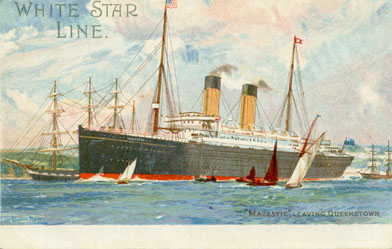
On February 20, 1891, the Reverend Oscar Kelsch arrived in New York City at the age of 48 without his family. He must have first sailed from Bremen, Germany to Liverpool, England, but we have no record of that voyage. From Liverpool, he sailed to New York on the R.M.S. Majestic. The ship’s manifest lists him as a pastor from Germany, but it incorrectly lists his age as 36.
The Majestic, built in Belfast in 1889 for the White Star line, carried 1,320 passengers (300 first class, 170 second class, 850 third class). In July 1891, she set a record crossing of 5 days, 18 hours, 8 minutes, for an average speed of 20.1 knots.
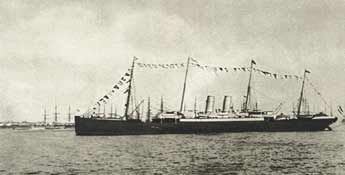
Anna and the children—Gerhard, Alma, and Sophia—arrived in New York three months later on May 19, 1891. They sailed from Bremen, Germany on the S.S. Saale.
Again the ship’s manifest creates some problems with ages. In this case Anna, who was 42 in May 1891, is listed as 34. Gerhard (8) is listed as 7; Alma (about 2 ½) is listed as 3; and Sophia (about 1 ½) is listed as 6 months.
Built in Glasgow in 1886 for the North German Lloyd line, the Saale carried 1,240 passengers (150 first class, 90 second class, and 1,000 third class). Service speed was 17 knots. (Anton Dvořák, the composer, also traveled on the Saale when he came to the United States in September 1892).
1891 – 1910: parishes in the United States
According to a letter written in 1976 by his son-in-law Charles W. Struckmeyer, we know that Oscar Kelsch served German-speaking parishes in Topeka, Kansas; Eau Claire, Wisconsin; Ander, Texas; and Nanticoke, Pennsylvania. We have also found that he served a congregation in Owensville, Misouri, Biddleborn, Illinois, and another in Chicago. Perhaps there was another parish as well in Minnesota. But the complete sequence and exact dates are currently unknown.
The family has always said the Rev. Oscar Kelsch was an “Evangelical” pastor, but recent discoveries show that he served both Lutheran and Evangelical parishes. Therefore the term “Evangelical” must be understood in the sense of the Evangelical Church of the Prussian Union—a combination of both Lutheran and Reformed traditions. As you will soon see, Oscar Kelsch’s career was marked by short-term pastorates and conflict with congregational and synodical leadership.
1891 – 1893: Owensville, Missouri and Minnesota
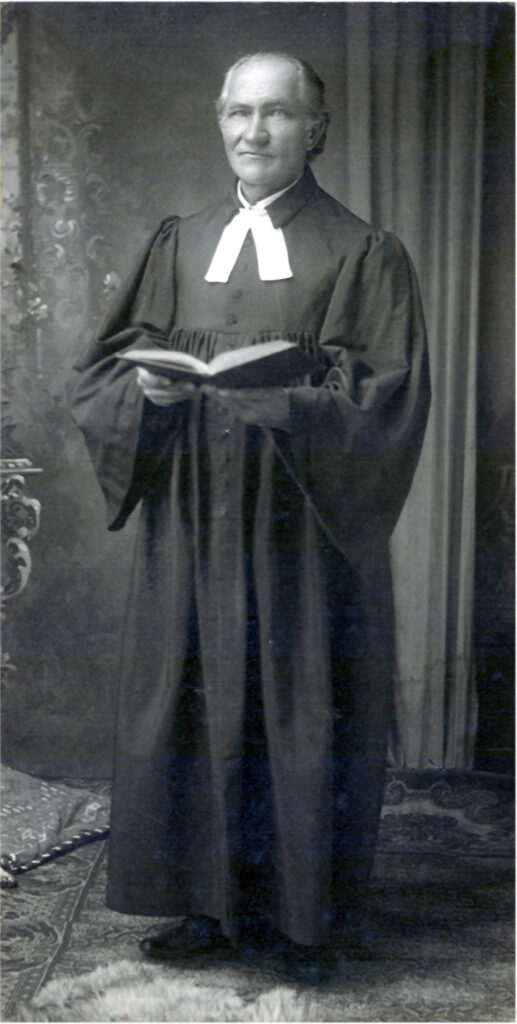
An article from November 20, 1891 in the Hermanner Volksblatt, a German language newspaper in Hermann, Missouri shows that Oscar Kelsch was serving at St. Petri Evangelische Kirche in nearby Owensville, Missouri, about 80 miles west of St. Louis. Today, that congregation is St. Peter’s United Church of Christ at 112 W. Peters Avenue, Owensville, Missouri 65066. This may have been Oscar’s first parish in the United States.
A Kansas state census form from 1895 states that the Kelsch family came to Kansas from Minnesota, so that state is probably the location of Oscar’s second parish. But no town or congregation in Minnesota has been identified so far. His ministry in Kansas began about 1893, so he must have served a parish in Minnesota sometime around 1892. He then moved to Newton, Kansas.
The photograph of Oscar Kelsch in his robes was taken at a photographic studio in Minneapolis and probably date from this period. This would make him about 50 years old in this photo. This could place his second parish in or near Minneapolis.
1893 – 1896: Newton and Topeka, Kansas
A February 14, 1894 article in the Newton (Kansas) Daily Republican newspaper records that Rev. Oscar Kelsch was the new pastor at the German Lutheran Church in that town located at West Seventh and Plum Streets in Harvey County. A newspaper article in 1922 describes the history of this congregation, known then as Immanuel Evangelical Church. They list Oscar Kelsch beginning his ministry there in 1893. But another pastor took over in 1895.
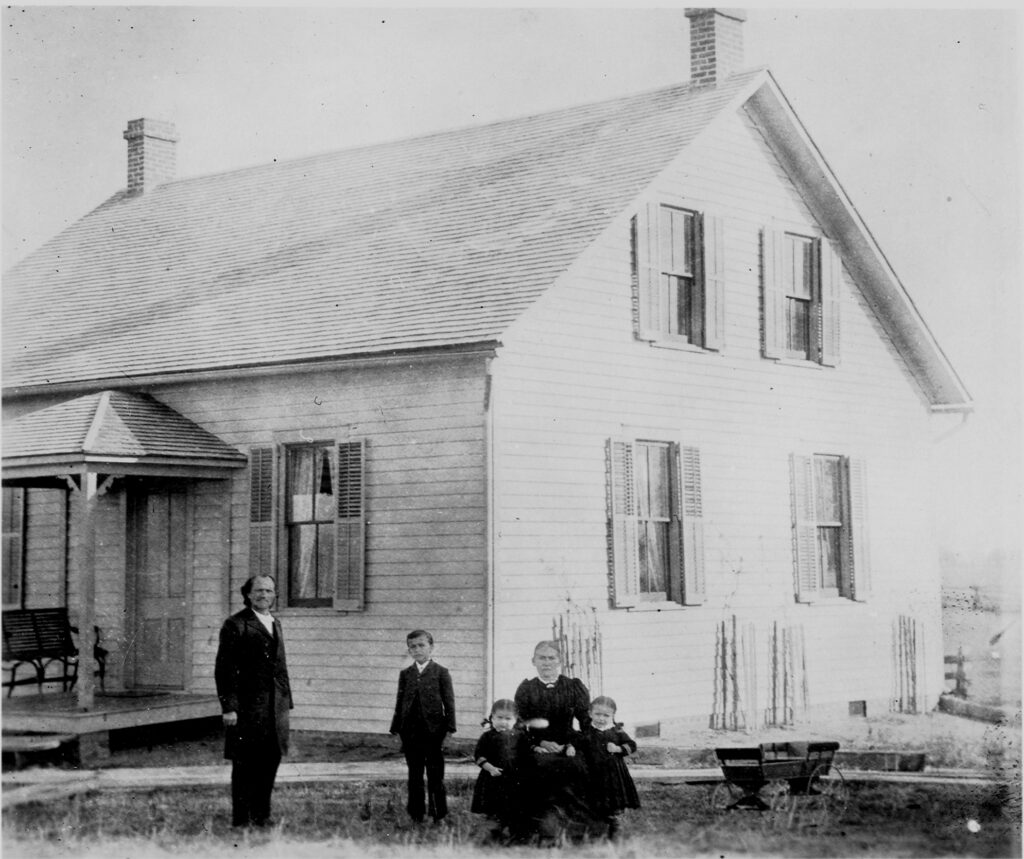
This photograph of the family outside of a farmhouse on a flat plain was most likely taken in Kansas based on the age of the children in the picture.
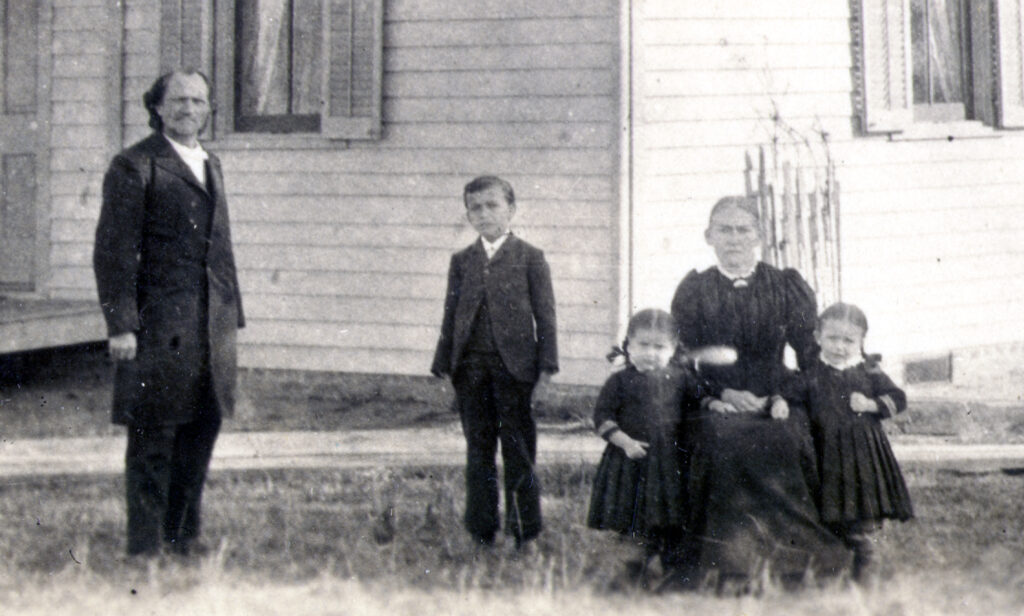
The Kansas State Census of 1895 places the Kelsch family in Topeka Ward 2, Shawnee, Kansas in that year. Topeka is about 100 miles northeast of Newton, which is just 15 to 20 miles north of Wichita. The Kansas Census lists the children as Gerhard (12), Alma (6) and Sophie (5).
A city directory published in Topeka in 1896 lists Oscar Kelsch as the pastor of the German Evangelical Church located at East Third and Hancock Streets. This was later identified as St. Paul’s Evangelical Church, organized in 1888. It was an Independent Evangelical Church. It closed in 1926. The church records (all in German) can be found at the St. Louis County Library.
1896 – 1897: Chicago, Illinois
Sometime in 1896, Oscar Kelsch became the pastor of St. Nicolai Evangelical Lutheran Congregation (Evangelische Lutherische St. Nikolai Gemeinde) in the Avondale neighborhood of Chicago.
Avondale was a quiet Cook County suburb to the northwest of Chicago when the congregation was formed on December 1, 1889 under Rev. C. Steinbach. Initially, the congregation was associated with the Evangelical Lutheran Wartburg Synod (founded in 1876). The town of Avondale was soon annexed by the city of Chicago the following year, 1890.
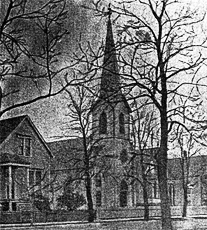
The congregation soon made a connection with the Evangelical Lutheran Synod of North America, a synodical conference organized in 1872 by the Wisconsin Evangelical Lutheran Synod (WELS), the Lutheran Church – Missouri Synod (LC-MS) and the Norwegian Synod as a joint expression of shared theological tenets. The organization was an agreement to work together in matters relating to Christian evangelism. Included with this was a sharing of pulpits between clergy of all groups, sharing of educational facilities, and co-operation on evangelism and mission work. Through this synodical organization, the congregation called a new pastor.
During the next six years, St. Nicolai was served by three different pastors: Robert Witte, C. Struckmeyer, and H. Heuchschmann. Rev. C. Struckmeyer was Rev. Karl Christian Friedrich Struckmeier (Struckmeyer), born in Westfalen on July 26, 1864. He was a second cousin of Sophia Kelsch’s future husband, Carl William Struckmeyer. Karl Christian Struckmeyer emigrated to the United States in 1882. He graduated from Eden Seminary in Wellston, Missouri and was ordained in LaSalle, Illinois in 1890. St. Nicolai was his first parish, where he served from 1893 to 1894. During the pastorate of Rev. C. Struckmeyer, a parsonage was built and a bell tower was added to the church structure. He later served parishes in St. Louis (St. Stephen/Stefani); Redding, California (a mission congregation); Oakland, California (St. Mark’s); and San Francisco, California (St. Paul’s and Bethel).
In 1897, Oscar Kelsch was called to serve the congregation, but evidently, things did not go well. Within six months, the church developed a deficit of $332, which precipitated a congregational conflict. By August 1897, Oscar Kelsch was without a job, as you will see below.
My first link to Oscar Kelsch’s service at St. Nicolai came with the discovery of this article published in the New York Times, dated August 3, 1897:
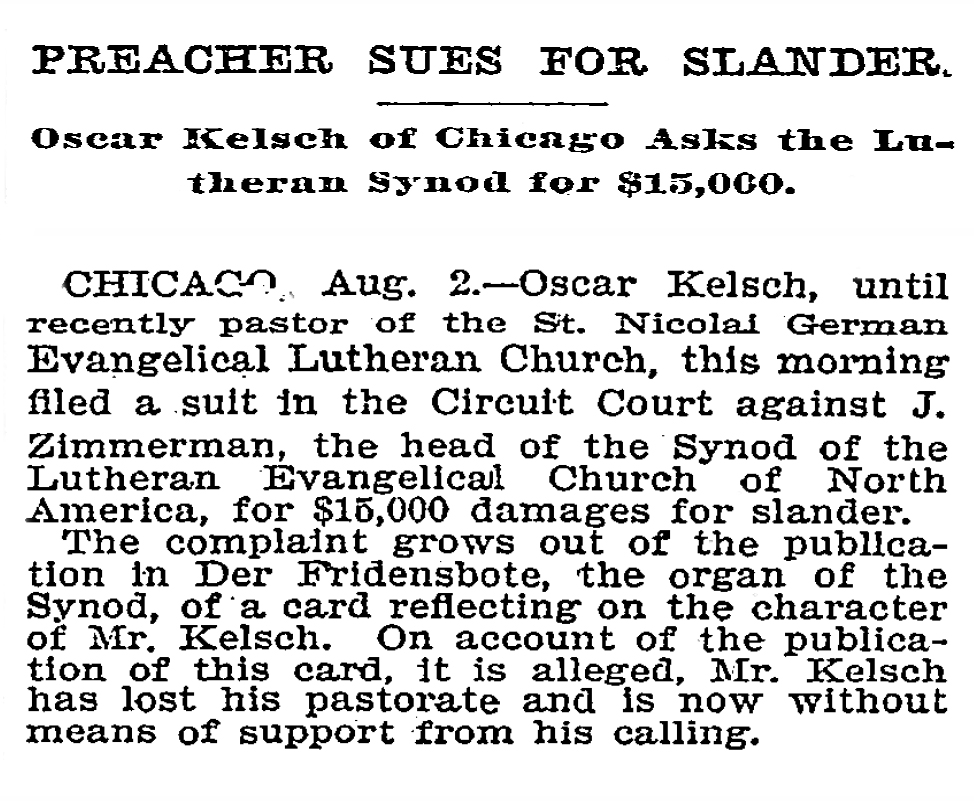
As a result of this article, I checked with Rev. David K. Antieau, pastor of what is today the St. Nicolai United Church of Christ at 3000-14 N. Kedzie Avenue, Chicago, Illinois 60618, (773) 478-5580. He confirmed that Oscar Kelsch was pastor there in 1896 and 1897 and provided me with information on the history of the congregation.
The synodical publication mentioned in the Times article—Der Friedensbote—translates as “The Messenger of Peace.” I don’t have any information on the result of the law suit for slander, but evidently, Oscar Kelsch’s departure from St. Nicolai was anything but peaceful.
1898 – naturalization
The Kelsch daughters, Alma and Sophia, became naturalized citizens in 1898 according to the 1920 census. Gerhard would have become naturalized the same year, but the 1920 census lists the date as unknown.
1898 – 1900: Biddleborn, Illinois
Because Oscar Kelsch was an Evangelical pastor, my earliest research into the congregations he served began with the United Church of Christ which grew out of Evangelical-Reformed and Congregational roots. Eden Theological Seminary in Webster Groves, Missouri is today associated with the United Church of Christ (UCC). It holds the archives of the former Evangelical Synod in the United States which grew out of the older Deutsche Evangelische Synode von Nord-Amerika (German Evangelical Synod of North America). So this was my starting point.
An initial phone contact with the senior research consultant, Rev. Dr. Lowell Zuck, a retired church history professor, showed no obituary in their files for Oscar Kelsch, which indicated that he was probably not a part of the Evangelical Synod and would not be found in their files.
The 1900 federal census provided the first firm information on where Oscar Kelsch was living prior to his final days in St. Louis, Missouri. In that year, the Kelsch family was located in Lively Grove, Washington County, Illinois, not far from Hoyleton. This became the sole clue to finding a congregational connection at the Eden Seminary archives.
In a follow-up visit to the archives at Eden Theological Seminary, and based on the 1900 location in Lively Grove, Rev. Zuck discovered a pamphlet with a printed history of Trinity Evangelical Protestant Church in Biddleborn, Illinois, which is a nearby town.
The parish history showed that Oscar Kelsch served as pastor of Trinity from October 1898 to April 15, 1900. His son, Gerhard Wilcke Kelsch was confirmed there in 1899. Oscar Kelsch would have been about 56 years old when he was pastor of this congregation.
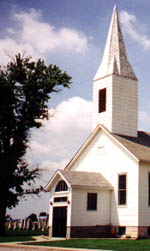
Today the congregation is Trinity United Church of Christ, 5698 Biddleborn Road, Marissa, Illinois 62257, (618) 475-2958.
Founded in 1878, Trinity Evangelical Protestant Church says that its roots lie in Biddleborn, Germany, however the name is not really German. There are two German towns with a similar name: Bittelbronn in Württemberg and Büttelborn in Hesse.
In 1900, Trinity was part of the Evangelical Protestant Church, which Dr. Zuck explained was a different church body than the German Evangelical Synod.
The Evangelical Protestants were an indigenous American denomination, originally German speaking. The first German Evangelical Protestant church was founded in Pittsburgh in 1782. At their peak in 1925, there were twenty-seven churches, mostly in the Ohio River valley. Dedicated to religious liberty, Evangelical Protestants stood for freedom of thought, an open mind, and respect for those whose beliefs were different. In St. Louis, an early congregation was founded in 1856 as the Independent Evangelical Protestant Church.
On September 16, 1885, several pastors from the Pittsburgh and Cincinnati areas met in Pittsburgh to form the Die Evangelisch-Protestantischen Kirche von Nord-Amerika (the Evangelical Protestant Church of North America). Their association was not an official synod but a loosely organized fellowship of ministers with no organizational structure or constitution.
In my research at Eden Seminary, when I commented on the short duration of Oscar Kelsch’s ministry at Trinity (October 1898 to April 1900), Rev. Zuck said, “Maybe they couldn’t pay him.” By 1898, the first “great depression” in the United States (1893-1896) was largely over. However, in farming communities, bad weather and crop failures were always a recurring problem for the local economy.
His other pastorates also appear to have been of a short duration, so it’s difficult to determine a specific reason for his frequent movement, perhaps finances but also perhaps a contentious and litigious personality.
1901 – 1903: Eau Claire, Wisconsin?
We have no record of where Oscar Kelsch served from 1901 to 1903. However Eau Claire, Wisconsin seems to be a strong possibility.
Eau Claire (pronounced O’Claire, not You Claire) lies about 85 miles east of Minneapolis-St. Paul, and was incorporated in 1872. The name of the town derives from the French phrase “eaux claire” which means “clear waters.”
So far, nothing has turned up among the UCC churches in Eau Claire. I have also checked out most of the Lutheran congregations in town, including those of the Evangelical Lutheran Church in America (ELCA), Lutheran Church – Missouri Synod (LC-MS) and the Wisconsin Evangelical Lutheran Synod (WELS).
My search criteria has been: 1) the church must date from at least 1900, and 2) the church must have been German-speaking in origin. If congregations matched these two requirements, I checked their web sites to see if a list of former pastors was included. So far, no luck.
1904 – 1905: Ander, Texas
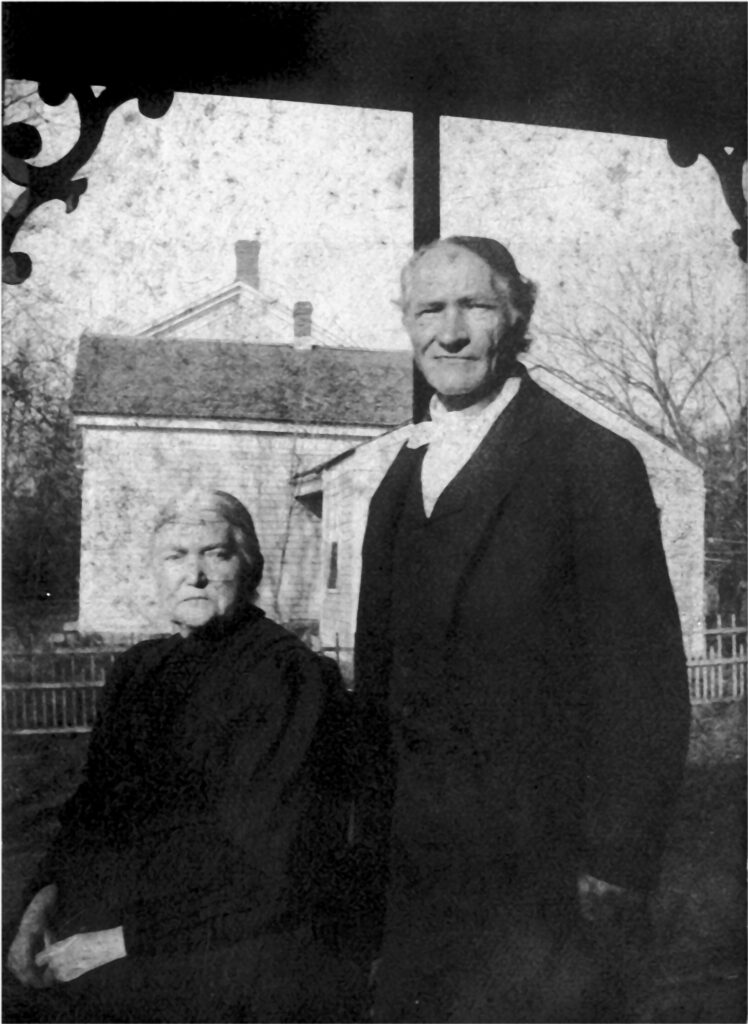
In Ander, Texas, another piece of the puzzle fell into place. Rev. Kelsch’s son-in-law Charles W. Struckmeyer said that Oscar had served a parish in Andor, Texas. I could find no such town, but I finally came across the tiny town of Ander.
The small town does not have a UCC congregation, but it does have a Lutheran church founded by German immigrants in 1875. Today, the congregation is St. Peter’s Lutheran Church (ELCA), 1545 E FM 1961, Goliad (Ander), Texas 77963, (361) 645-2922.
A history of St. Peter’s Lutheran Church states, “Ander cannot be found on most maps of Texas and some might consider it just a wide spot in the road. Nevertheless there is such a place and at one time it was a busy country village.“
The town of Ander, in Goliad County, Texas was settled by Germans and was originally named Hanover, after the German city and kingdom of Hannover. Settlers came from Hannover, Prussia, Saxony and Alsace.
However, in 1901, Hanover changed its name to get a post office. (Another Hanover, Texas already existed). The town was named after Lutheran pastor Theophilus N. Ander, who was then serving the parish (1890-1902).
The current pastor at St. Peter’s Lutheran Church confirmed that Oscar Kelsch served as pastor there from 1904 to 1905. He would have been about 62 years old.
At the time, St. Peter’s was a congregation of the Old German Evangelical Lutheran Synod of Texas of the Unaltered Augsburg Confession, which in German reads Die Alte Deutsche Evangelisch-Lutherische Synode von Texas der unveränderten Augsburgischen Bekenntnisses. The Synod existed from 1896 to 1921. It was loosely allied to a small group of other Lutheran synods in the Lutheran General Council (1867-1918).
The term “Unaltered Augsburg Confession” refers to the primary confession of faith of the Lutheran Church and one of the most important documents of the Reformation. It was written by Martin Luther’s associate Philipp Melanchthon in 1530. The word “unaltered” separates the original confession from any later variation, especially a revision by Melanchthon in 1540. These later rewrites, by Melanchthon and others, were done to make sections of the confession more palatable to other reformers who disagreed on certain points of doctrine. For instance, the 1540 version was more acceptable to John Calvin. Claiming a foundation on the “unaltered” confession declares that the original document is a true exposition of Holy Scripture and that any variation is incorrect or imprecise and should be rejected.
Pastor Harold Muffley, who served St. Peter’s from 1954 to 1967, reported in an address to the Goliad Historical Society:
The pastors who came must have been convinced of their call. There is no record of any of them going back to Germany. They came with little money and only world goods that they could carry on their back. There are many stories told of their hardships. In Texas it was a different story. Travel by stagecoach was rugged, walking was almost impossible on the muddy roads. There were few inns for settlers at night. One record tells of a pastor walking from dawn to dusk and making only fifteen miles, the same pastor was able to walk fifty-five miles in one day when the roads were good.
The parsonages were far from elaborate or even comfortable. One parsonage is described; it was eight by fourteen feet with a dirt floor and one opening, a door.
The pastors were good men, dedicated to their work and able to take more than most people. The salary of a pastor before 1900 was anywhere from one hundred to three hundred dollars a year. They often charged for their services, a baptism cost two dollars and a confirmation five. They would take what they could get for weddings and funerals.
Discovering that Oscar Kelsch served at St. Peter’s was my first clue that Oscar Kelsch may have served other Lutheran parishes throughout the United States. Later, St. Nicolai in Chicago confirmed that, as did St. John’s in Nanticoke, Pennsylvania.
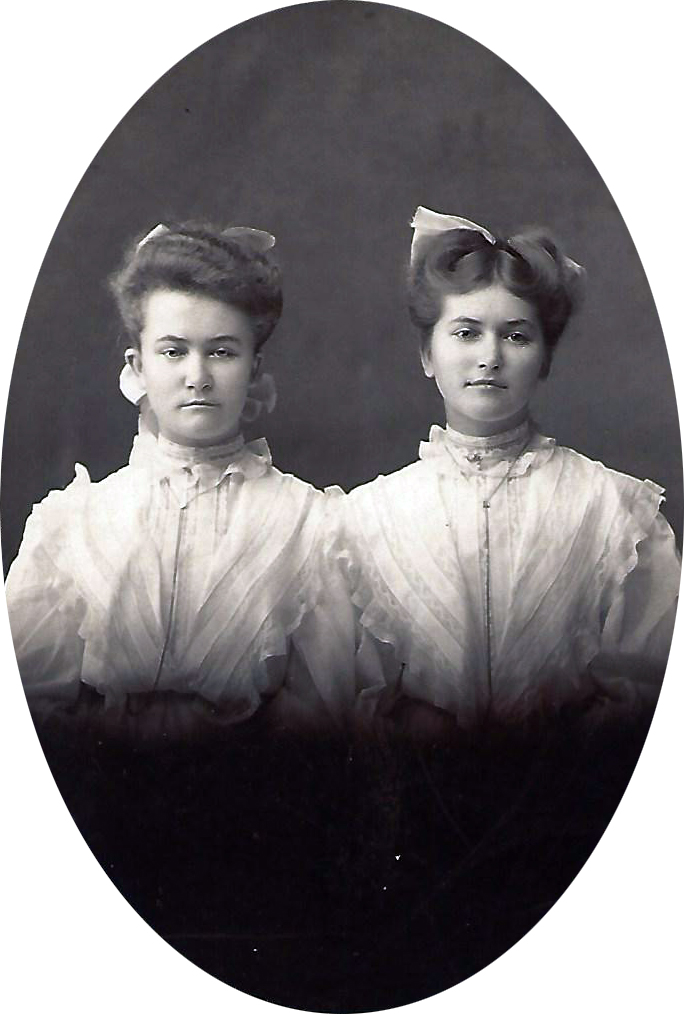
Further confirmation of the residency in Ander, Texas was an article in the St. Louis Republic newspaper dated November 20, 1904. The St. Louis World’s Fair was in progress and the paper listed visitors who signed in at their various state’s pavillions. It states that G. W. Kelsch from Ander registered at the Texas pavillion. Gerhard Wilcke Kelsch would have turned 22 on the day prior to visiting the fair.
It appears that Gerhard decided to remain in St. Louis and took a job with the U. S. Post Office. The St. Louis Republic dated September 2, 1905 states that G. W. Kelsch was a St. Louis delegate to the Postal Clerks Association convention in Cedar Rapids, Iowa. Nine male delegates were sent that year accompanied by the first female delegate from St. Louis.
It looks like the rest of his family followed Gerhard to St. Louis about a year later. In the meantime, they headed to Pennsylvania.
1905 – 1906: Nanticoke, Pennsylvania
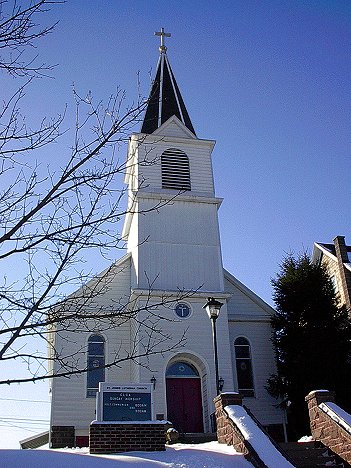
Using the information discovered in Texas, I wrote to several UCC and Lutheran congregations in Nanticoke, Pennsylvania and discovered that Oscar Kelsch served at Saint John Lutheran Church in Nanticoke for a very brief period from September 1905 to September 1906 at age 63.
The church, which was founded on September 23, 1882, is known today as The Lutheran Church of Saint John the Evangelist (ELCA), 231 East State Street, Nanticoke, Pennsylvania 18634, (570) 735-8531. In 1905, St. John was a free congregation, not associated with any synod.
Here again, Oscar Kelsch was embroiled in controversy and a contentious lawsuit. An article in the “Scranton Truth” newspaper (Scranton, Pennsylvania) dated August 14, 1906 states that Oscar Kelsch was a resident of Texas when the congregation called him to serve as pastor on July 31, 1905. Thirty days later, on September 1, 1905, Oscar Kelsch took possession of the parsonage (rent free) and was given a salary of $60 per month. Just eight months into his ministry, on April 30, 1906, the officers and trustees (Herman Barschat, Gustav Hanke, Carl Miller, Frederick Scheffler, Mathias Borman, Julius Beyer, Adolph Giest, and Anthony Boltz) met and took action to dismiss him as pastor and replace him with Rev. Herman C. Fultz, pastor of First German-English Evangelical Lutheran Church in Wilkes-Barr. They gave Oscar Kelsch three month’s notice that his services as pastor would no longer be required and that he was required to vacate the parsonage by the end of July. When Oscar Kelsch refused to vacate the parsonage, the trustees asked Justice-of-the-Peace Robbins atempted to remove the Kelschs from the parsonage to no avail.
Oscar Kelsch filed an injunction with the Luzerne County court to restrain the trustees from ousting him from his office and home. The procedings took place before Judge John Lynch on August 15, 1906. Kelsch argued that he could only be dismissed if a complaint had been filed, that he was formally accused of some violation of his call, and that two-thirds of congregational members had voted to terminate his call. Niether had been done. He stated that the majority of the congregation suppoerted him, and the decision of the trustees was invalid. He further stated that if he was wrongfully dismissed, it would cause irreparable injury to his reputation and his future usefulness in church work and would subject him to physical deprivations and loss of salary. He was represented by attorney William J. Goeckel.
I can find no further information regarding the trial, but by 1906, Rev. Oscar Kelsch was in St. Louis, Missouri.
What is the connection between parishes?
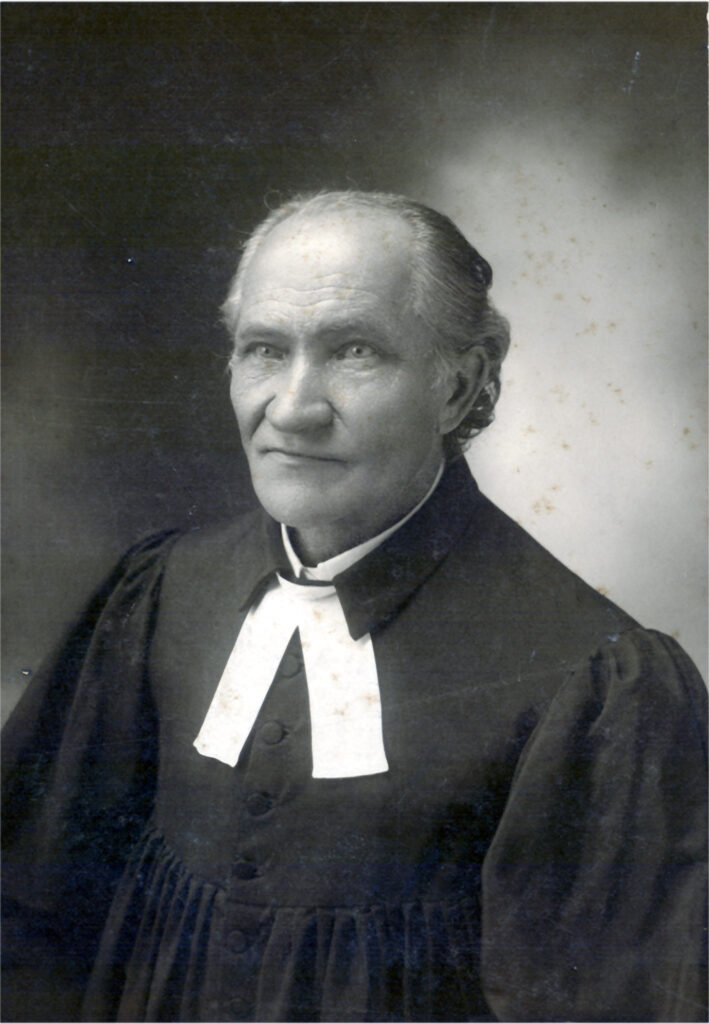
So far, I have discovered a wide range of synodical connections for the parishes that Oscar Kelsch served. The Owensville, Missouri and Biddleborn, Illinois parishes are now members of the United Church of Christ (UCC) and the Ander, Texas and Nanticoke, Pennsylvania parishes are part of the Evangelical Lutheran Church in America (ELCA).
When Oscar Kelsch served these parishes, the Biddleborn, Illinois congregation was associated with the Evangelical Protestant Church, the Ander, Texas parish was part of the Old German Evangelical Lutheran Synod of Texas of the Unaltered Augsburg Confession, and the Nanticoke, Pennsylvania church was a free congregation, unaffiliated with any synod.
If these congregations had no synodical connections, how did they call Oscar Kelsch? Was he connected with a German missionary society which sponsored pastors for German-speaking parishes in the United States? This is still a mystery.
1907 – 1909: St. Louis, Missouri?
At some point after August 1906, the Kelsch family moved to St. Louis, Missouri, however we have no firm record of exactly when that may have been. I don’t know if Oscar Kelsch served a final parish in St. Louis before his retirement there. If so, I have not discovered any evidence of that to this date. Oscar turned 64 in December 1906. The move may have simply been prompted by the fact that Gerhard had settled in St. Louis by 1905 and Oscar’s family may have decided to relocate there when Oscar retired from the active ministry, defeated by his dismissal in Pennsylvania.
1909
In June 1909, Gerhard Wilcke Kelsch married Clara Anna Struckmeyer in St. Louis. Originally from Hoyleton, Illinois, Clara had moved to St. Louis with her family in 1904. (See Louis Struckmeyer and Henriette Detering.)
1910 – 1919: St. Louis, Missouri
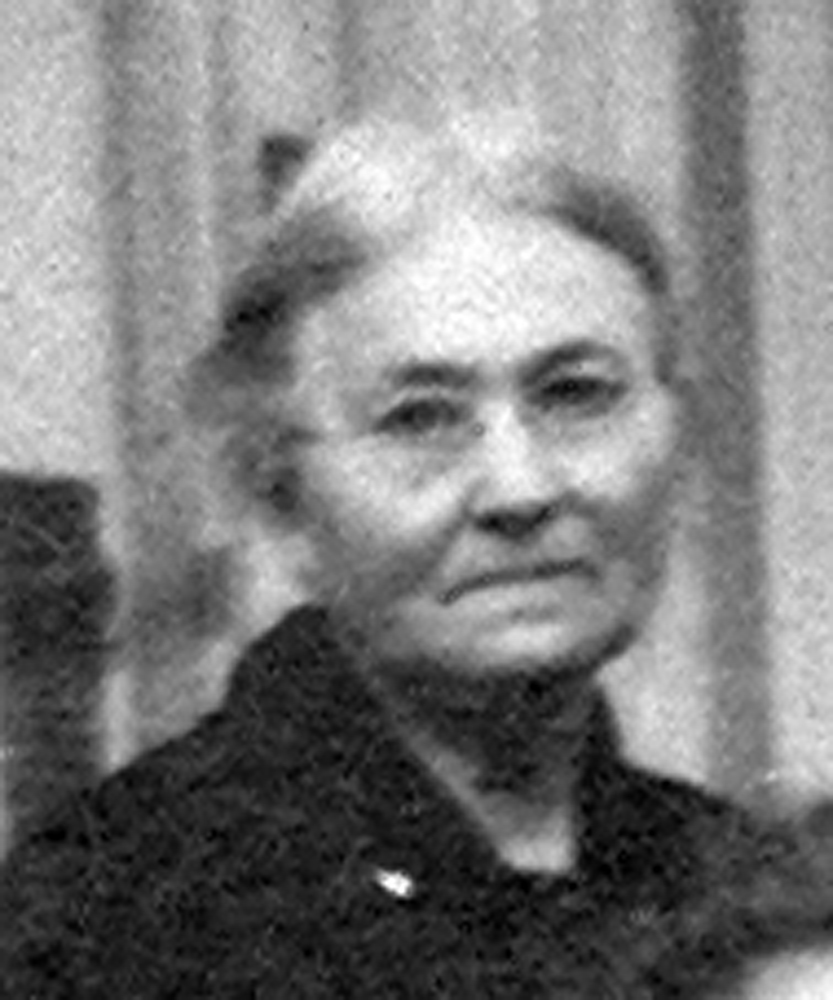
The 1910 federal census reports that Oscar Kelsch (66) was retired and living at 5450 Eleanor Avenue in St. Louis with Anna (61) and their daughters Alma (21) and Sophia (20). Alma was doing sewing for a wholesale house and Sophia was a stenographer.
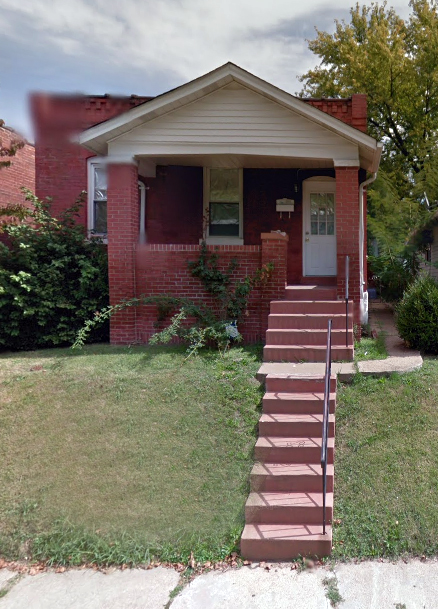
The house on Eleanor Avenue still exists, but the street name has changed to Christy Avenue. It lies just east of Christy Boulevard and north of Gravois Avenue in South St. Louis. The street is only three blocks long today. The northern block, between Delor and Wilcox, is still called Eleanor Avenue, but from Wilcox to Gravois, it has been rechristened Christy Avenue.
In July 1910, Oscar Kelsch suffered a stroke. He died 13 months later on October 20, 1911 at age 68.
The following is an entry in the Kelsch family bible by Anna Kelsch translated from German by Dr. Charles W. Struckmeyer on May 15, 1976:
After a long and exhaustive illness, my dear husband, Oscar David Friedrich Wilhelm Kelsch entered his last sleep on October 20, 1911, at 11:30 a.m.
After suffering a stroke which paralyzed his left side, he was bed-ridden for 13 months. Previously, due to a heart ailment, he had had a number of lesser attacks. He was obliged to endure much pain and suffering and while it is a comfort to know that his torture is ended, his passing is a sad blow to me.
The parting after nearly thirty-two years of wedded life is difficult to bear. Without him my very existence, my feelings and interests in life and my surroundings are shattered. I feel like a fallen leaf, blown hither and yon by the wind. My feeling of loss will not end until the Lord too calls me home.
Our married life was not always sunny, we suffered much sorrow and pain, but the hard times seemed to bring us closer together.
On Sunday October 21, 1911, the dear departed was laid to rest on St. Matthew’s cemetery in St. Louis. The text of his last commitment by Rev. Fayn was Psalm 126, verse 5.
Grandfather Kelsch was born in Halberstadt, Saxony, Germany December 29, 1842, migrated to America in 1891.
Oscar was buried in St. Matthew’s Cemetery in St. Louis, Missouri, Block 15, Lot 64.
Psalm 126, verse 5 reads:
They that sow in tears shall reap in joy.
Six months later, in April 1912, Charles William Struckmeyer (brother of Clara Struckmeyer) married Sophia Kelsch at her mother’s home at 5450 Eleanor Avenue. (See Charles Struckmeyer and Sophia Kelsch.)
1920 – 1929
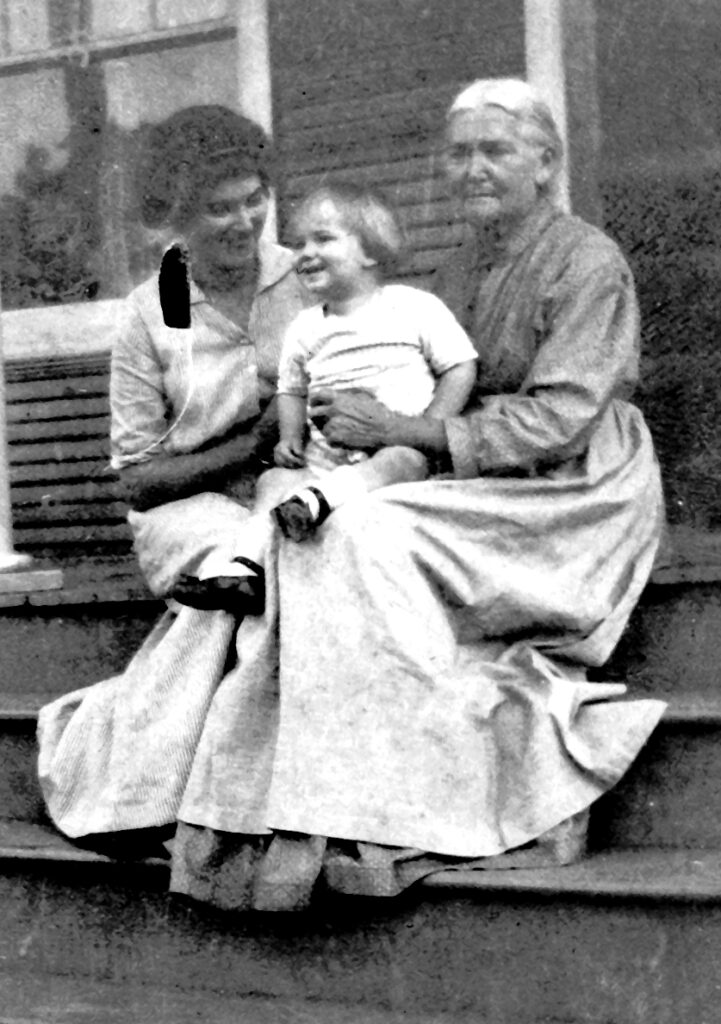
By January 1920, Anna Kelsch (71) and her daughter Alma (31) were living at 3559 California Avenue in St. Louis with Sophia (30) and Charles Struckmeyer (32) and their two children Robert (6) and Wanda (10 months). Their son LeRoy was born the following year.
In 1920, Gerhard Wilcke Kelsch (age 37) and his wife Clara (37) were living at 3375 Watson Road in St. Louis with their two sons, Gerhard Wilcke, Jr. (6) and Alfred Edward (4).
Anna Kelsch died on May 23, 1920 of breast cancer at age 71 and was buried beside her husband in St. Matthew Cemetery in St. Louis on May 25th.
Alma Kelsch married Harrison M. Black sometime after 1920. In the 1920 census, Harry Black was a widower living with his two daughters, Margaret (6) and Harriett (4) in his mother-in-law’s home at 2821 Dayton Street in St. Louis. His wife Paulina Gruene had died in 1917 of pneumonia at age 28.
1930 – 1939
(1930 Census material)
1940 – 1949
On March 29, 1946, Gerhard Wilcke Kelsch died in St. Louis.
1950 – 1959
On March 4, 1954, Harrison M. Black died in St. Louis.
1960 – 1969
On March 15, 1968, Clara (Struckmeyer) Kelsch died in St. Louis.
1970 – 1979
On January 5, 1972 Alma (Kelsch) Black died in St. Louis.
On September 29, 1973, Sophia (Kelsch) Struckmeyer died in St. Louis.
On May 8, 1979, Charles Struckmeyer died in St. Louis.
